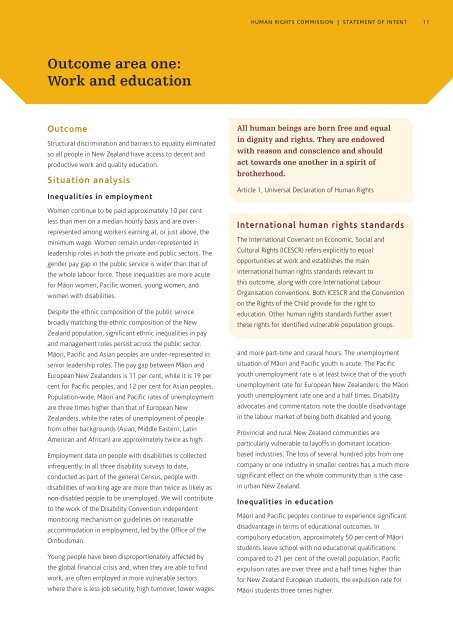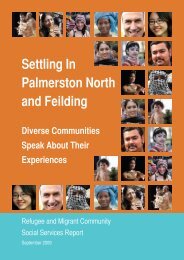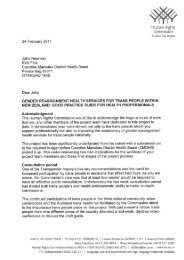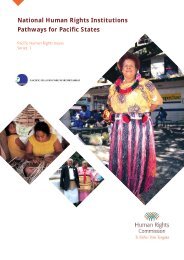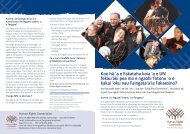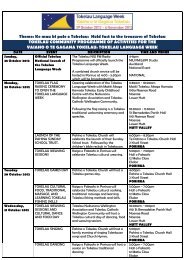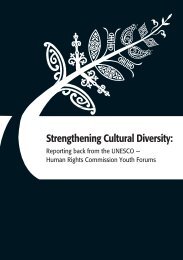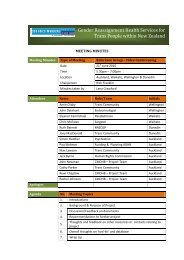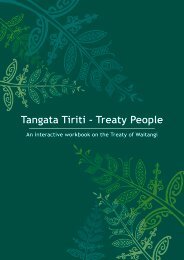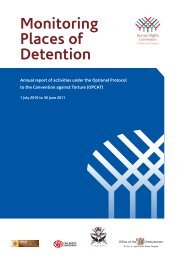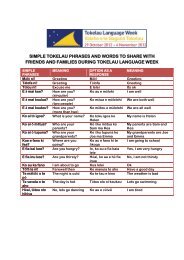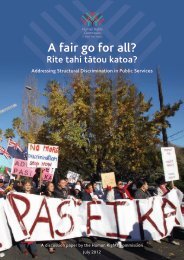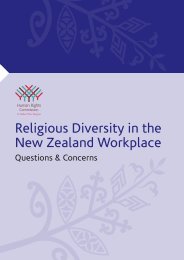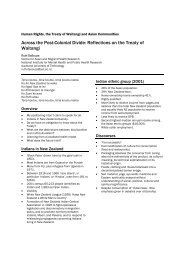Statement of Intent 2013 to 2016 - Human Rights Commission
Statement of Intent 2013 to 2016 - Human Rights Commission
Statement of Intent 2013 to 2016 - Human Rights Commission
You also want an ePaper? Increase the reach of your titles
YUMPU automatically turns print PDFs into web optimized ePapers that Google loves.
HUMAN RIGHTS COMMISSION | STATEMENT OF INTENT11Outcome area one:Work and educationOutcomeStructural discrimination and barriers <strong>to</strong> equality eliminatedso all people in New Zealand have access <strong>to</strong> decent andproductive work and quality education.Situation analysisInequalities in employmentWomen continue <strong>to</strong> be paid approximately 10 per centless than men on a median hourly basis and are overrepresentedamong workers earning at, or just above, theminimum wage. Women remain under-represented inleadership roles in both the private and public sec<strong>to</strong>rs. Thegender pay gap in the public service is wider than that <strong>of</strong>the whole labour force. These inequalities are more acutefor Mäori women, Pacific women, young women, andwomen with disabilities.Despite the ethnic composition <strong>of</strong> the public servicebroadly matching the ethnic composition <strong>of</strong> the NewZealand population, significant ethnic inequalities in payand management roles persist across the public sec<strong>to</strong>r.Mäori, Pacific and Asian peoples are under-represented insenior leadership roles. The pay gap between Mäori andEuropean New Zealanders is 11 per cent, while it is 19 percent for Pacific peoples, and 12 per cent for Asian peoples.Population-wide, Mäori and Pacific rates <strong>of</strong> unemploymentare three times higher than that <strong>of</strong> European NewZealanders, while the rates <strong>of</strong> unemployment <strong>of</strong> peoplefrom other backgrounds (Asian, Middle Eastern, LatinAmerican and African) are approximately twice as high.Employment data on people with disabilities is collectedinfrequently. In all three disability surveys <strong>to</strong> date,conducted as part <strong>of</strong> the general Census, people withdisabilities <strong>of</strong> working age are more than twice as likely asnon-disabled people <strong>to</strong> be unemployed. We will contribute<strong>to</strong> the work <strong>of</strong> the Disability Convention independentmoni<strong>to</strong>ring mechanism on guidelines on reasonableaccommodation in employment, led by the Office <strong>of</strong> theOmbudsman.Young people have been disproportionately affected bythe global financial crisis and, when they are able <strong>to</strong> findwork, are <strong>of</strong>ten employed in more vulnerable sec<strong>to</strong>rswhere there is less job security, high turnover, lower wagesAll human beings are born free and equalin dignity and rights. They are endowedwith reason and conscience and shouldact <strong>to</strong>wards one another in a spirit <strong>of</strong>brotherhood.Article 1, Universal Declaration <strong>of</strong> <strong>Human</strong> <strong>Rights</strong>International human rights standardsThe International Covenant on Economic, Social andCultural <strong>Rights</strong> (ICESCR) refers explicitly <strong>to</strong> equalopportunities at work and establishes the maininternational human rights standards relevant <strong>to</strong>this outcome, along with core International LabourOrganisation conventions. Both ICESCR and the Conventionon the <strong>Rights</strong> <strong>of</strong> the Child provide for the right <strong>to</strong>education. Other human rights standards further assertthese rights for identified vulnerable population groups.and more part-time and casual hours. The unemploymentsituation <strong>of</strong> Mäori and Pacific youth is acute. The Pacificyouth unemployment rate is at least twice that <strong>of</strong> the youthunemployment rate for European New Zealanders; the Mäoriyouth unemployment rate one and a half times. Disabilityadvocates and commenta<strong>to</strong>rs note the double disadvantagein the labour market <strong>of</strong> being both disabled and young.Provincial and rural New Zealand communities areparticularly vulnerable <strong>to</strong> lay<strong>of</strong>fs in dominant locationbasedindustries. The loss <strong>of</strong> several hundred jobs from onecompany or one industry in smaller centres has a much moresignificant effect on the whole community than is the casein urban New Zealand.Inequalities in educationMäori and Pacific peoples continue <strong>to</strong> experience significantdisadvantage in terms <strong>of</strong> educational outcomes. Incompulsory education, approximately 50 per cent <strong>of</strong> Mäoristudents leave school with no educational qualificationscompared <strong>to</strong> 21 per cent <strong>of</strong> the overall population. Pacificexpulsion rates are over three and a half times higher thanfor New Zealand European students; the expulsion rate forMäori students three times higher.


